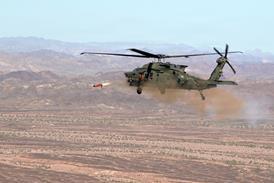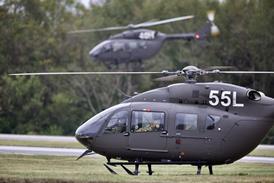Boeing has shaved 250 widebody aircraft from its latest 20-year commercial aircraft demand forecast, describing the tweak as a minor adjustment reflecting factors including a slower-than-expected post-pandemic recovery.
The US aircraft manufacturer says demand for new jets remains robust, predicting in its 2025 Commercial Market Outlook, released on 15 June, that between now and 2044 carriers will need 43,600 new aircraft, including freighters and passenger jets with 30 seats or more.
By comparison, Boeing’s 2024 Market Outlook estimated carriers would need 43,975 new jets within 20 years.
The year-on-year reduction, while less than 1% overall, mostly reflects a downward revision by Boeing of expected widebody aircraft demand.

The company now anticipates airlines needing 7,815 widebodies through 2044, down from the 8,065 widebodies it estimated in last year’s report that airlines would need over 20 years.
On the single-aisle side, Boeing’s new report puts 20-year demand at 33,285 jets (95 fewer than predicted last year). It projects carriers needing 955 freighters during that period (50 fewer than estimated last year) and 1,545 regional jets (20 more).
Of the 43,600 deliveries Boeing anticipates, China, Eurasia, North America, and South and Southeast Asia, would each account for about 20%, with the balance going to customers in Africa, Latin America, the Middle East, Northeast Asia and Oceana.
Boeing vice-president of commercial marketing Darren Hulst calls the downward widebody shift “a relatively minor adjustment” of just 3%.
“Long-haul [travel] has absolutely been slower to recover from the pandemic shutdowns,” he says. “Given that base, we’ve evaluated the long-term demand for widebody jets to be slightly lower than we did last year.”
Hulst also cites geopolitical tension as among “risks” he says influenced Boeing’s revisions, while adding that the company still anticipates long-haul air traffic will double during the next two decades.
The world’s airlines now operate 27,150 cargo and passenger jets with more than 30 seats – about 400 more than one year ago.
Between now and 2044, Boeing expects airlines will replace about 21,100 existing aircraft with new jets and acquire another 22,500 aircraft to expand. Under that scenario, the global fleet would increase 3.1% annually through 2044 to 49,640 aircraft – 83% more than today.
Boeing bases its prediction on an expectation that the global economy will increase an average of 2.3% annually for 20 years, and that during that period, on average, global passenger air traffic will jump 4.2% annually and air cargo traffic will increase 3.7% annually.
The company expects airlines in fast-growing emerging markets – in Africa, Asia, Latin America and the Middle East, for instance – will fuel the expansion.
Boeing’s Market Outlook also accounts for ongoing supply chain and labour shortages that have left aircraft manufacturers unable to fully meet demand.
Hulst says airlines are now short about 1,200 single-aisle and 300 widebody jets.
“The industry is only receiving about half… the number of aircraft they received in the pre-pandemic years between 2015 and 2018,” he notes. “Resuming that production… has proven to be more challenging than resuming the demand.”
The Market Outlook also highlights several notable shifts in recent decades.
For instance, global passenger air traffic has tripled during the last 25 years, while the number of passenger and cargo aircraft in service has doubled. During that period, however, the average number of seats on narrowbody jets jumped from the mid-140s to high-160s, Hulst says.
Also, in 2000, the 10 largest airlines accounted for 45% of all air travel capacity, while today’s 10 largest carriers account for 30%, a shift partly reflecting air travel expansion in emerging markets, he adds.


























